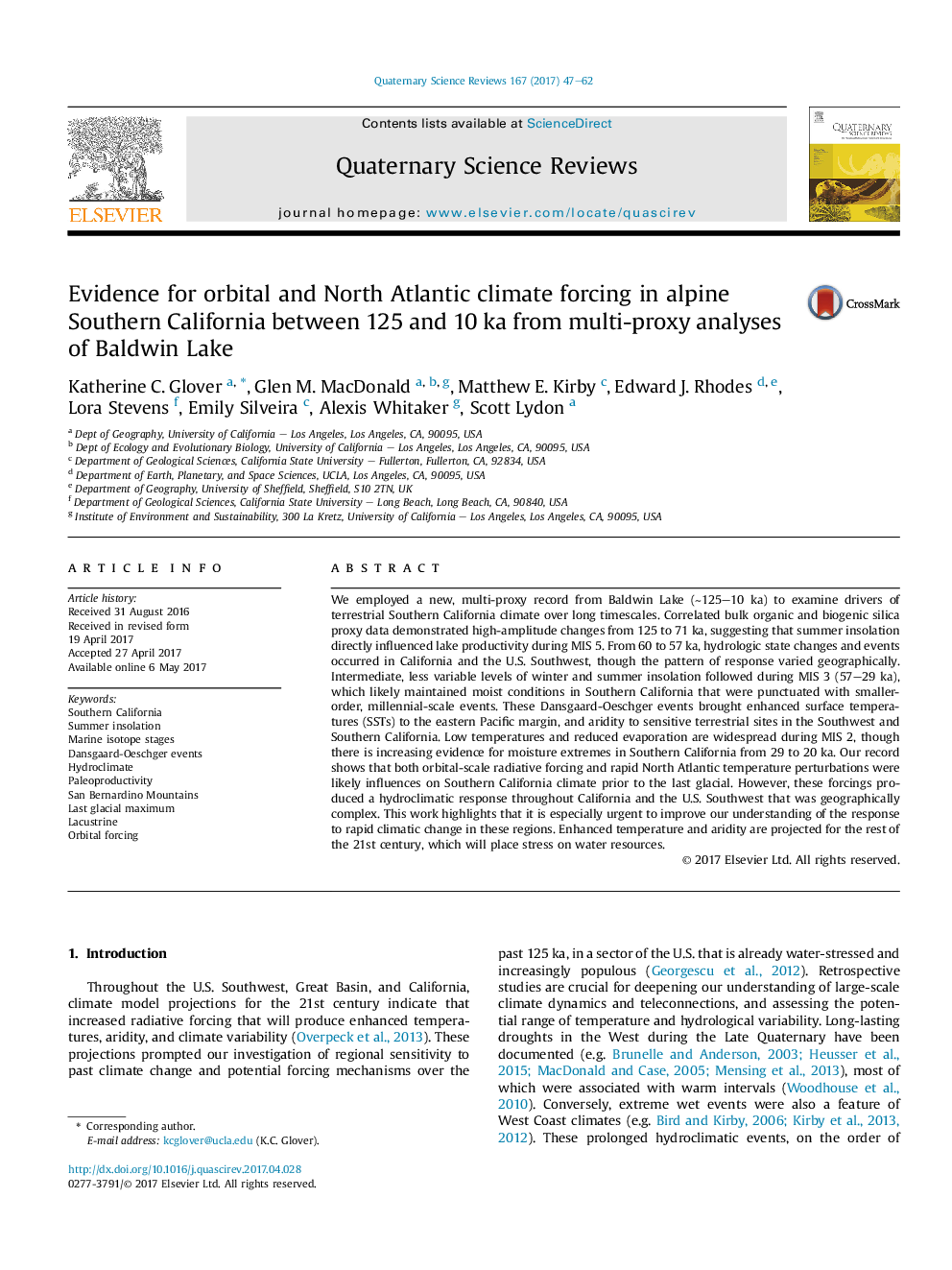| کد مقاله | کد نشریه | سال انتشار | مقاله انگلیسی | نسخه تمام متن |
|---|---|---|---|---|
| 5786671 | 1640768 | 2017 | 16 صفحه PDF | دانلود رایگان |
- A new multi-proxy record from Baldwin Lake, San Bernardino Mountains, California dates from 125 to 10 ka.
- We show evidence that subtropical summer insolation likely influenced Baldwin Lake's changes in paleoproductivity since MIS 5e.
- Millennial-scale oscillations in Baldwin Lake's paleoproductivity record during MIS 3 are coeval with Dansgaard-Oeschger (D-O) events.
- Throughout the Great Basin, Southern California, and the Great Basin, D-O interstadial response was geographically varied during MIS 3.
We employed a new, multi-proxy record from Baldwin Lake (â¼125-10 ka) to examine drivers of terrestrial Southern California climate over long timescales. Correlated bulk organic and biogenic silica proxy data demonstrated high-amplitude changes from 125 to 71 ka, suggesting that summer insolation directly influenced lake productivity during MIS 5. From 60 to 57 ka, hydrologic state changes and events occurred in California and the U.S. Southwest, though the pattern of response varied geographically. Intermediate, less variable levels of winter and summer insolation followed during MIS 3 (57-29 ka), which likely maintained moist conditions in Southern California that were punctuated with smaller-order, millennial-scale events. These Dansgaard-Oeschger events brought enhanced surface temperatures (SSTs) to the eastern Pacific margin, and aridity to sensitive terrestrial sites in the Southwest and Southern California. Low temperatures and reduced evaporation are widespread during MIS 2, though there is increasing evidence for moisture extremes in Southern California from 29 to 20 ka. Our record shows that both orbital-scale radiative forcing and rapid North Atlantic temperature perturbations were likely influences on Southern California climate prior to the last glacial. However, these forcings produced a hydroclimatic response throughout California and the U.S. Southwest that was geographically complex. This work highlights that it is especially urgent to improve our understanding of the response to rapid climatic change in these regions. Enhanced temperature and aridity are projected for the rest of the 21st century, which will place stress on water resources.
Journal: Quaternary Science Reviews - Volume 167, 1 July 2017, Pages 47-62
